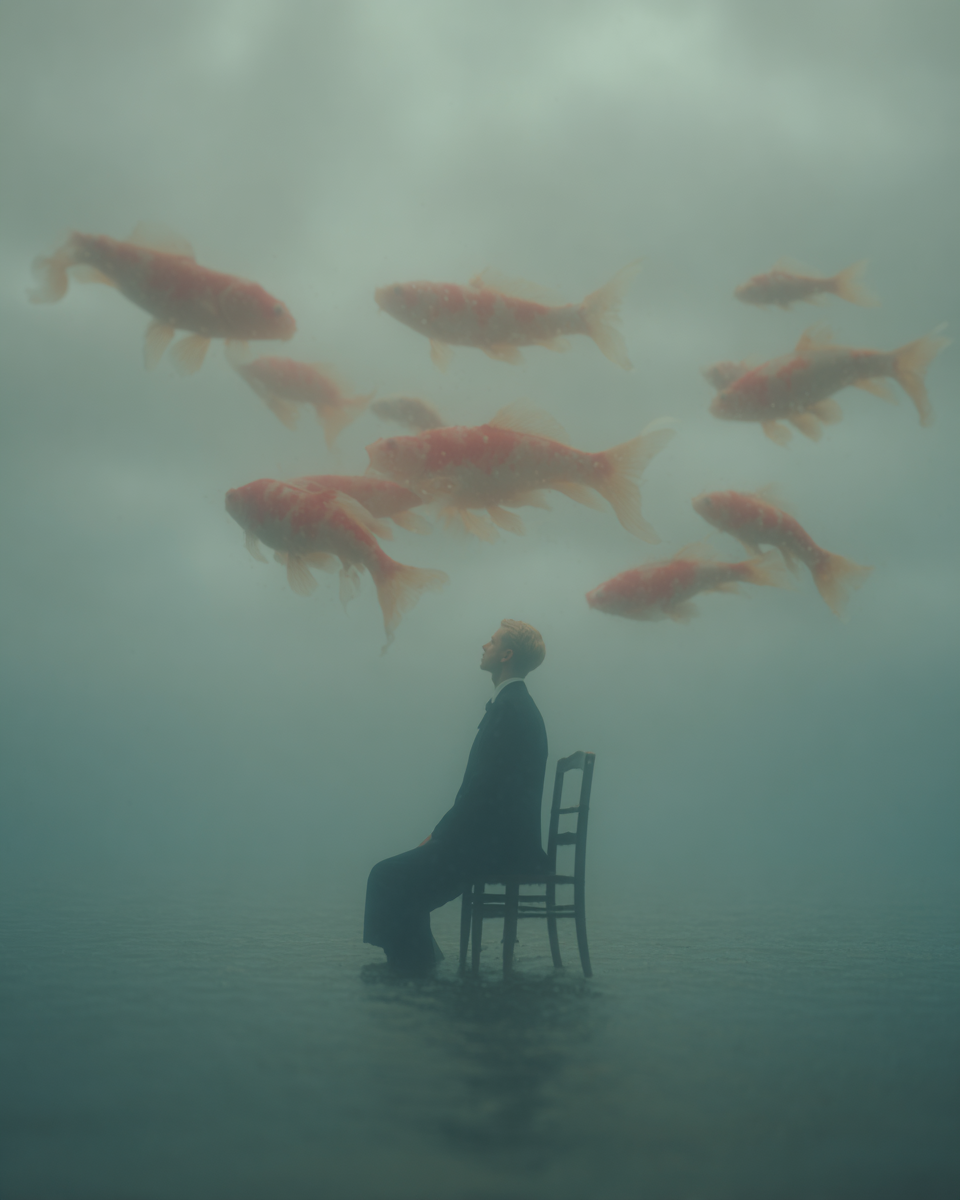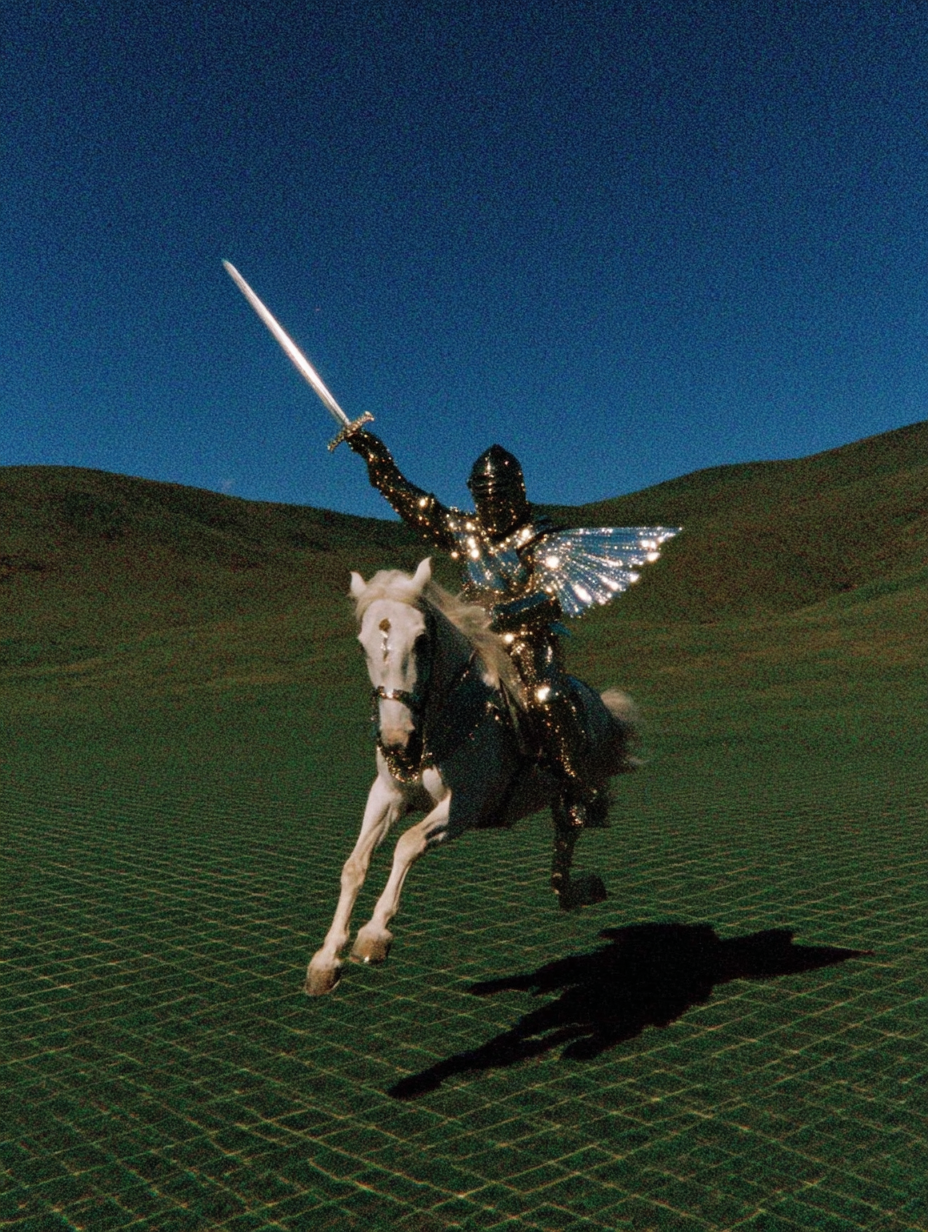
When I set out to build the visual identity for my blog, I did what most designers do—I started with Pinterest boards, art books, and design blogs. But nothing felt quite right.
Then I landed on Midjourney’s public feed.
It was chaotic and weird, full of styles I’d never considered. Classical sculpture blended with neon textures. Renaissance paintings with cyberpunk overlays. I was hooked.
I clicked “Copy Prompt” on an image I liked—like stealing the recipe after tasting the dish. Then I began riffing. I wrote prompts based on our brand values: curiosity, the unknown, the future, classical knowledge, and myth-making through tech.
Somewhere in that rabbit hole of Greco-Roman sculptures, vintage illustrations, and Dadaist color palettes, a new style started to emerge. One that felt uniquely us—even though I had never planned for it.
That’s the magic. I didn’t design the look. I discovered it. Midjourney just made that possible.
Why Midjourney works—because it’s not always working
Let’s be clear: Midjourney is not built for accuracy. It’s built for flow.
While other AI tools are deterministic (you input A, you get A), Midjourney is probabilistic. You input A, and sometimes you get C, D, or Z. It’s more jazz than calculus.
That unpredictability is often seen as a flaw. But in creative work, it’s a feature.
When you’re searching for inspiration, you don’t want something perfect. You want something interesting.
That diagram of an F-16 engine? ChatGPT nails every bolt. But Midjourney might give you an abstract sculpture of it in marble—and that version might spark something totally new.

Prompting Midjourney: How I think about it
Here’s how I use it:
Start loose. I don’t aim for hyper-specific prompts. I start with a vibe, a feeling, a story.
Let it show me what it sees. It always gives me four versions. I almost never pick just one.
Remix. I don’t chase perfection. I look for potential.
Explore. I treat prompts as conversations. I’ll change the style, reference an artist, toss in new descriptors, and see where it takes me.
The point isn’t to get to your original idea. It’s to stumble onto a better one.
The Reach Test: I use it every day
There are dozens of AI tools I’ve tried.
Flux. DALL·E. Runway. And yes—ChatGPT’s own image model. They all have strengths.
But Midjourney is the one I reach for without thinking. When I’m exploring an aesthetic direction, feeling stuck, or just want to be surprised—I open Discord, type a few words, and see what happens.
It’s like sketching in a notebook, not punching numbers into a spreadsheet.
Where it falls short (and why I’m okay with it)
Yes, it’s far from perfect:
Want clean typography? Good luck.
Need hands and fingers to be anatomically correct? Sometimes yes, sometimes very much no.
Want brand consistency in every image? That’s going to take iteration, image refs, and patience.
But that’s not what I use Midjourney for. I use it to think. To wander. To break through.
In the right hands, its flaws are just part of the creative terrain.

The future of creative AI: Less control, more discovery
What Midjourney understands—and what most AI tools don’t—is that creativity isn’t about fidelity. It’s about serendipity.
The tools that will define the next era of design won’t just obey commands. They’ll provoke ideas. They’ll behave less like software and more like collaborators.
And that’s what makes Midjourney feel alive. It’s the only creative tool I use that I can honestly say has surprised me.
The thrill of the unknown is baked into every prompt.
And in an industry full of control panels and precision dials, that’s something worth holding on to.
Final thought
Prompting Midjourney is 99% patience. But it’s also joy, frustration, curiosity, and flow. Which is just another way of saying—it’s real creative work.
